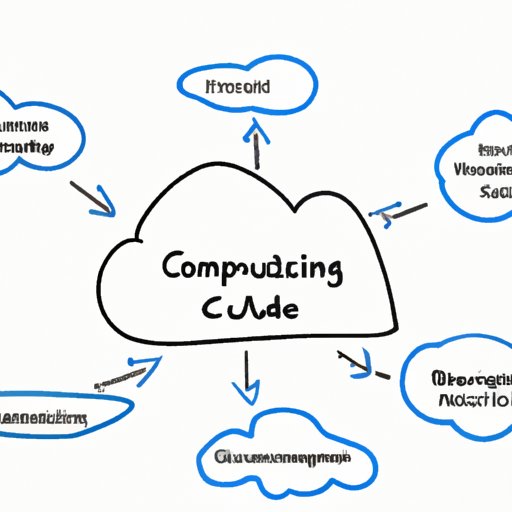Introduction
Cloud computing is a term used to describe the use of computer hardware and software resources that are delivered over a network, usually the internet. It has become an essential part of modern business operations and is used by companies of all sizes. In this article, we will explore the basics of cloud computing, its different types, how it is changing the way we do business, potential security risks, and its future.
Exploring the Basics of Cloud Computing
Cloud computing can be defined as a type of computing that relies on sharing computing resources rather than having local servers or personal devices to handle applications. It refers to both the applications delivered as services over the internet and the hardware and systems software in the datacenters that provide those services. According to a report from the International Data Corporation (IDC), “the worldwide public cloud services market is projected to grow 17.3 percent in 2020 to total $266.4 billion, up from $227.8 billion in 2019.”

An Overview of the Different Types of Cloud Computing
The three main types of cloud computing are public cloud, private cloud, and hybrid cloud. A public cloud is owned and operated by a third-party cloud service provider, which makes the resources available to the general public on a pay-as-you-go basis. Private clouds are owned and managed by a single organization and are not accessible by the general public. Hybrid clouds combine elements of both public and private clouds, allowing organizations to take advantage of the benefits of both types of cloud computing.

How Cloud Computing is Changing the Way We Do Business
Cloud computing is revolutionizing the way businesses operate. By utilizing cloud services, businesses can streamline processes, automate tasks, enhance collaboration and productivity, and save costs. According to a survey conducted by Cisco, “73% of respondents reported that their organization achieved significant cost savings since moving to the cloud, with an average of 24% across all respondents.”
The Security Risks of Cloud Computing
Although cloud computing offers many advantages, there are also potential security risks. These include lack of control over data storage, potential vulnerability to cyber attacks, misconfigurations, and data breaches. To protect against these risks, businesses should implement robust security measures, such as encryption, multi-factor authentication, and regular monitoring of their cloud environment.

The Future of Cloud Computing
The future of cloud computing looks bright. With its increasing popularity, advances in technology, and growing global market, cloud computing will continue to evolve and have a profound impact on the way businesses operate. According to a report from Gartner, “the global public cloud services market is expected to grow 17.5% in 2021 to total $313.4 billion, up from $266.4 billion in 2020.”
Conclusion
In conclusion, cloud computing has become an essential part of modern business operations. It offers numerous benefits, such as streamlining processes, automating tasks, enhancing collaboration and productivity, and cost savings. However, there are potential security risks that must be addressed. As cloud computing continues to evolve and become more popular, businesses must remain vigilant and take steps to protect their data and systems from potential threats.
(Note: Is this article not meeting your expectations? Do you have knowledge or insights to share? Unlock new opportunities and expand your reach by joining our authors team. Click Registration to join us and share your expertise with our readers.)
